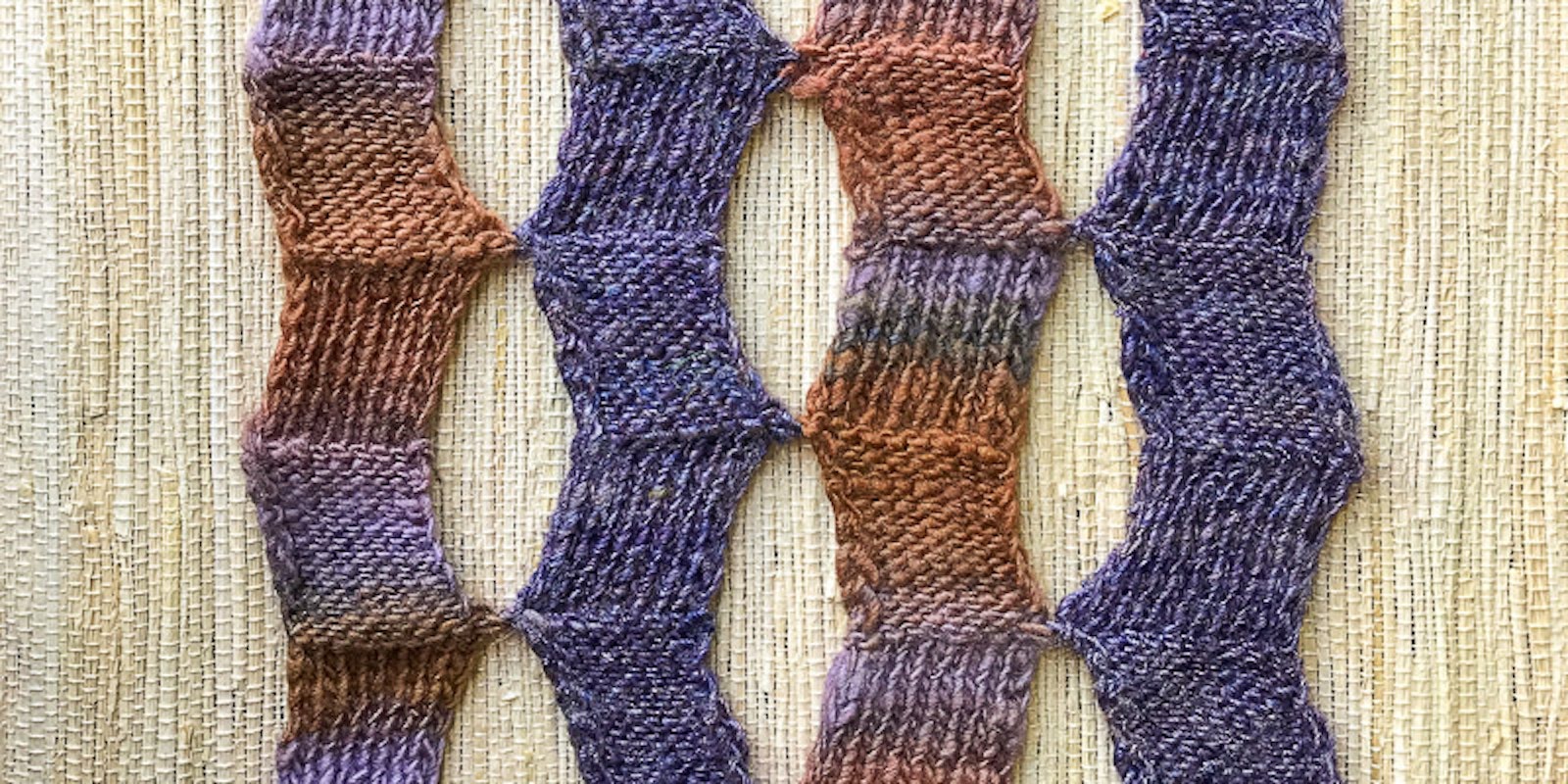“Energized yarns” is the term fiber artist Kathryn Alexander uses for finely tuned, active-twist yarns. In her video Spinning Energized Yarns, Kathryn explains that these yarns are not overtwisted, as some might say, but charged with the right amount of twist to achieve a tilted stitch in a knitted fabric. Amy Tyler’s new article on energized yarn in the Spring 2018 issue of Spin Off has people buzzing about these special yarns, so let’s look back at Kathryn’s classic video.
From left: An unenergized singles yarn and an energized singles yarn. From SpinKnit 2010: “The simple test of an ‘energized’ yarn is that if a loop of the yarn is left to hang loosely, the yarn will ply back on itself."
Spinning Energized Yarns
I’ve watched this video several times over the years, but I glean new things from it each time. What I love best is that Kathryn’s work is guided by her curiosity and creativity. Energized yarns require a bit of extra thought and attention as we work through the process. Here are just a few of the things I’ve learned from Kathryn:
Longwool locks. Kathryn says, “Border Leicesters are beautiful,” and I agree.
1. Before you spin: Think about staple length. Kathryn uses a range of fibers in her work, but she loves using longer stapled fibers and specifically longwools. These sturdy fibers can be charged with extra twist and maintain their body, stitch definition, and shape through washing and use. Finer, softer wool fibers can lose some of their twist activity and surface shaping.
Allowing the single to self-ply off the bobbin is an easy way to visualize the twist energy.
2. While you spin: How to measure twist? Pull a loop of singles off your bobbin and let it self-ply (fold and twist back on itself). Kathryn says that the ply angle that you see will mimic the stitch tilt that energized yarn will have when knitted. Active twist causes each stitch to turn and try to twist, even when knitted or woven into fabric.
3. After you spin: Storing energized yarns. Kathryn shows how to knit from a tensioned lazy kate but also discusses storage bobbins, hand-wound balls, and skeins. Her goal is a “package of tension,” which means storage options that keep the yarn tight and tidy. For this reason, she avoids center-pull balls (without a core) because they do not keep the center singles under the same tension as the exterior singles.
Spinning Energized Yarns has loads of information on creating active-twist yarns and discovering the knitted fabrics they create. It’s a great jumping-off point for exploring a more energized approach to our knitted stitches!
—Kate Larson
Featured Image: Photos by Kate Larson




